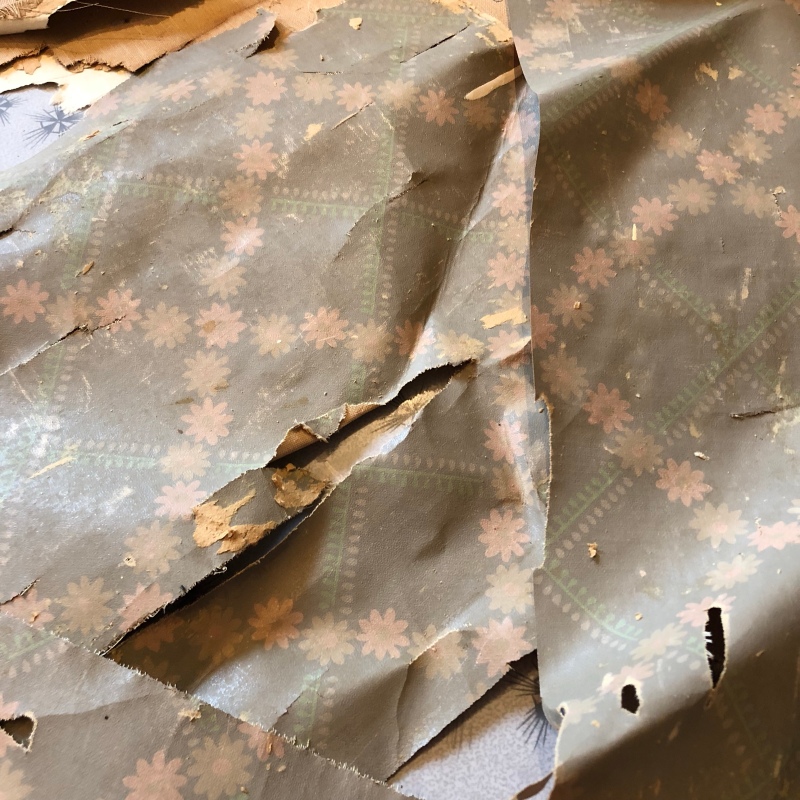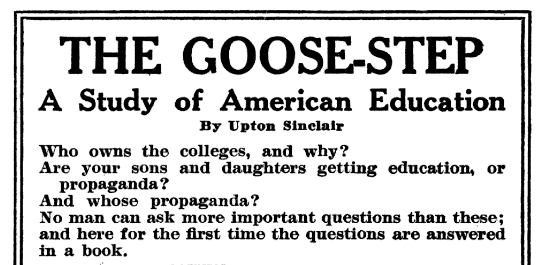We bought an old house (built in 1890) in May 2017, and our first project started before we even moved in. On her first visit, Mike’s aunt asked me what I wanted to do first, and when I said, “take down this terrible 80s apple wallpaper,” she ripped a huge chunk of it off the kitchen wall then and there. (She and her sisters came back over and spent many, many hours taking most of it down a few weeks later!).
Since then, we have been picking at it in bits and pieces. Last night, Mike was working on the very last corner with any wallpaper up.
Throughout the process, we’ve been able to save huge chunks of the bottom level of the wallpaper. That bottom layer looks like this:

I’ve spent too much time wondering when it was put up, who made it, if I could ever find a book selling it, all the things you’d probably expect from me. But we couldn’t really tell when it was from. The house was built in 1890, and the art historians, curators, and paper conservators I know (I have very cool and talented friends), didn’t think it was that old–the guesses were often 1920s-1940s, based on pattern alone.
But last night, when he ripped it down Mike found something truly exciting:

Real information! No more searching for “grey wallpaper that’s probably old with pink flowers in a diagonal pattern!”
So of course, rather than sleeping, I stayed up until 1:30 in the morning searching the American Periodicals database for Sanitas wall cover advertisements from 1880-1960. Some people are tired on Saturday mornings because they drink or party or other fun things, but I’m tired because I’m too excited by archives.
Anyway. Here are some of the things I’ve learned about Sanitas Wall Coverings:
- It’s not really wallpaper–it’s “wall covering,” because of the canvas or muslin back, which helps it better hold to plaster walls.
- It helps to prevent cracking in those plaster walls and helps to hold cracks together (it was definitely doing this on our walls and it’s power is sorely missed!)
- It is designed to be more “sanitary” and durable than regular wallpaper–you can wipe it off with a sponge to clean it. This explains why it is the only wallpaper layer we can recover–the rest have kind of melted away because of how wet we had to get them to take them down.
I did manage to find one book of sample Sanitas coverings from the Internet Archive. 
This book definitely predates our wallpaper (it’s c. 1900), and our pattern isn’t in it, but with the help of dozens of ads in American Builder, the Chicago Tribune, and the Ladies’ Home Journal, we can at least be confident that the Sanitas logo on the back of our wallpaper dates it to the 1950s. I’m sad that it isn’t more original to the house, but now we can more accurately know who put it up and perhaps find it more easily. The other crummy thing about the 1950s is that doing public domain research like I love is pretty much impossible.
But I did get to go down some fun rabbit holes already on this journey:
Who doesn’t love hygienic houses?

And who knew how much Upton Sinclair sounded like contemporary alt-righters (as if I needed more reasons to doubt him after the creepy misogyny of Love’s Pilgrimage?).

Who knows where I will go next?
(PS: If you know some boss sources for 1950s wallpaper books or just general info about the Sanitas or Interchemical Corporation, Coated Products Division, I’m more interested than you could ever know.)